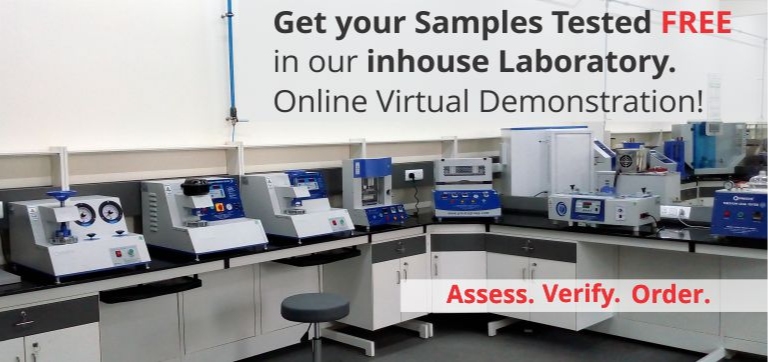Different Test Procedures for Flexible Packings

Plastic has become the favourite mode of packing across the world. Different industries like pharmaceutical industries and F&B are relying more on it than any other material. It can be used for storing and transporting of materials in any form be it solid, liquid, semi-solid or powder. There are different components in a PET packing that makes it suitable for different materials. All these components are tested prior to packing so that packing can withstand different environmental conditions. In testing labs, different conditions are simulated and materials are subjected to extreme working conditions in a controlled manner.
When we are talking about plastic packaging, we are primarily talking about plastic bottles, jars, barrels, boxes, blister boxes, etc. On all these packings, different tests are performed. Here are some test procedures listed that determine the quality of the packing.
Coefficient of Friction Test
The friction between plastic packing is very less. When stacked, they tend to slip and results in more efforts or requirement of more storage space. The stacking tendency of the material can be determined by using the coefficient of friction tester. In this test, samples are rub against each other and friction between them gets calculated. There are a slider block and a platform. On both of these, the sample is placed. The slider bock is attached to a pulley. As the test starts, the block starts to move and their coefficient of friction is displayed.
Dart impact test is performed on the plastic films used in flexible packings. In this test, a missile style dart is made to fall on the plastic film. The film is clamped on the hollow cylinder and the path of the dart is channelized. The dart has hemispherical head and can be dropped from variable heights, depending upon the test standard followed. The instrument has an electromagnetic holder that releases the dart on pressing of a button. The maximum test limit defined is 500gms.
Vacuum test determines the integrity of the seals on the different sides of the flexible packings. It is an amazing tool to determine the seal strength and pressure decay. The sample to be tested is placed in a desiccator and vacuum is created. The perfect packet will inflate first and then regain its normal shape when vacuum is released. On the other hand, a packet with the leaky seal will inflate first and then collapse when vacuum is released.
Contact us today for more technical information about coefficient of friction tester, dart impact test and vacuum leak tester.
you may also like
- The Ultimate Guide to Lab Testing Equipment: Ensuring Quality with Precision Instruments
- GSM Calculator Guide: How to Measure Fabric, Paper & Plastic Weight
- What Is a Gloss Meter? Working Principle, Uses & Benefits Explained
- Applications of Tensile Testers in Plastic, Metal & Rubber Industries
- How UV Chambers Help Manufacturers Beat Sunlight and Weather Challenges
Recent News
- Paper & Packaging Testing Instruments
- Paint, Plating & Coating Testing Instruments
- Plastic & Polymer Testing Instruments
- Environmental Testing Chambers
- PET & Preform Testing Instruments
- Color Measuring Testing Instruments
- View Entire Range Instruments

Catalogue 2023
Get information about new product launches, research, innovation and endeavors at Presto.
download Free Copy
Get a Quote


